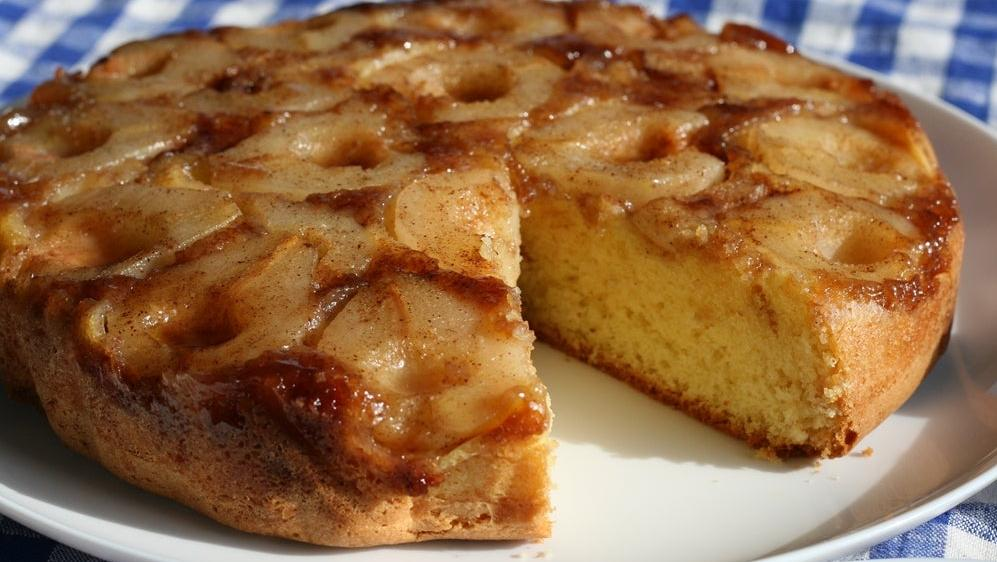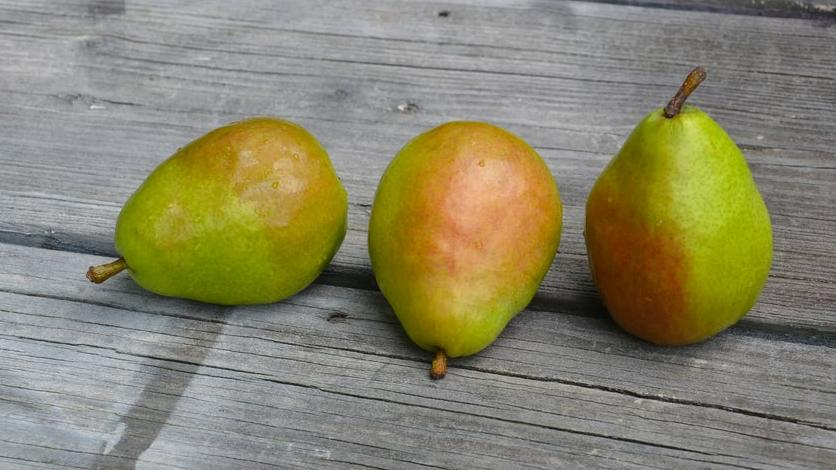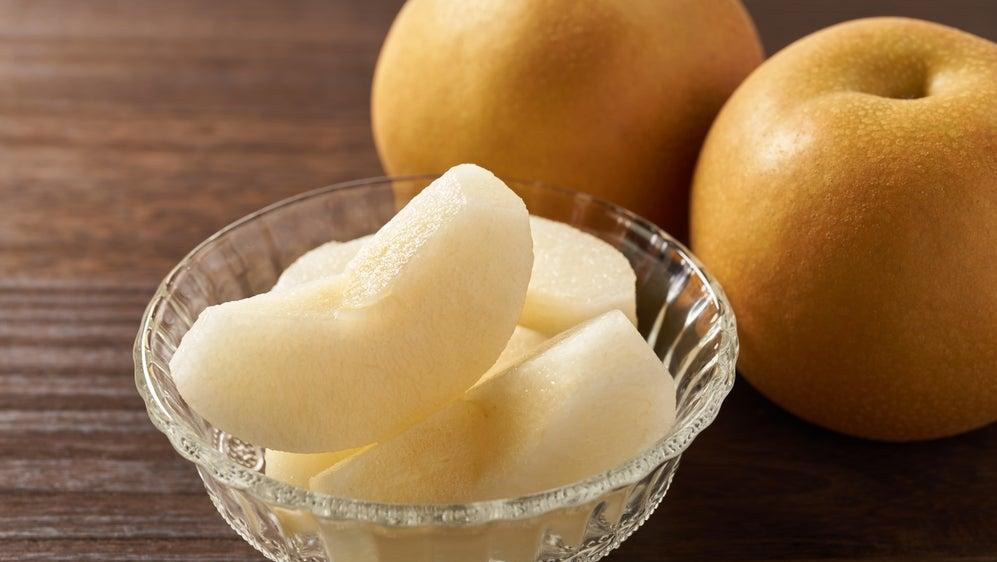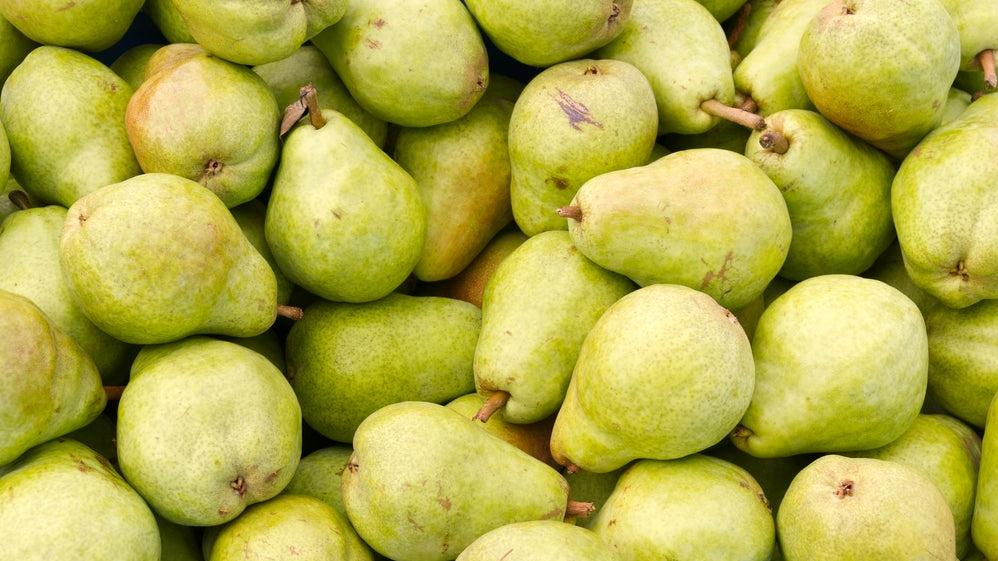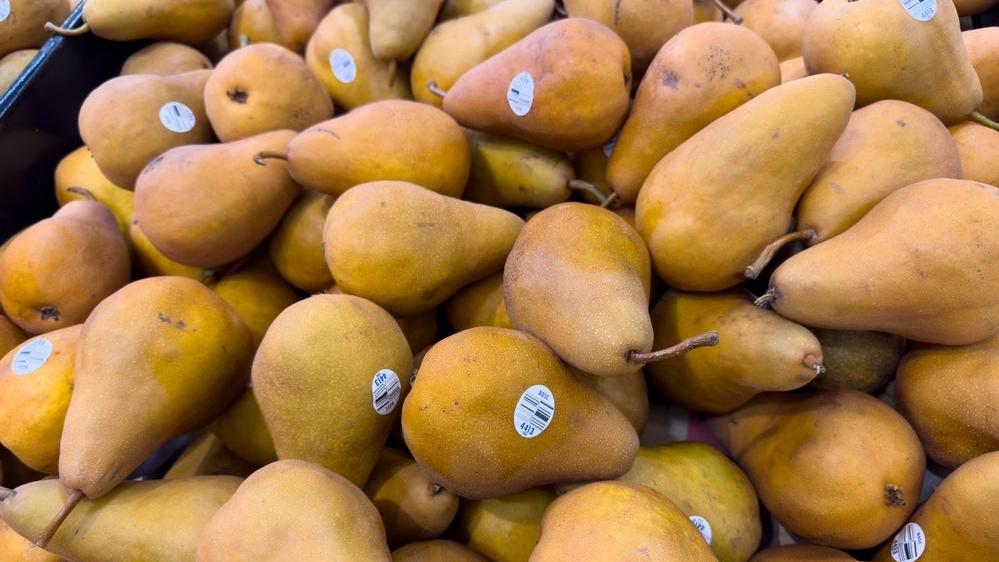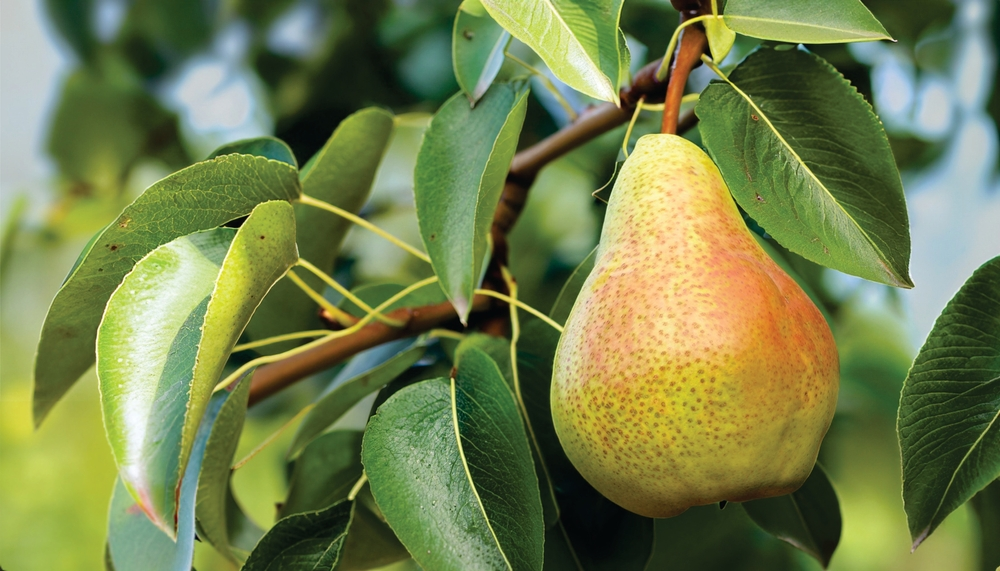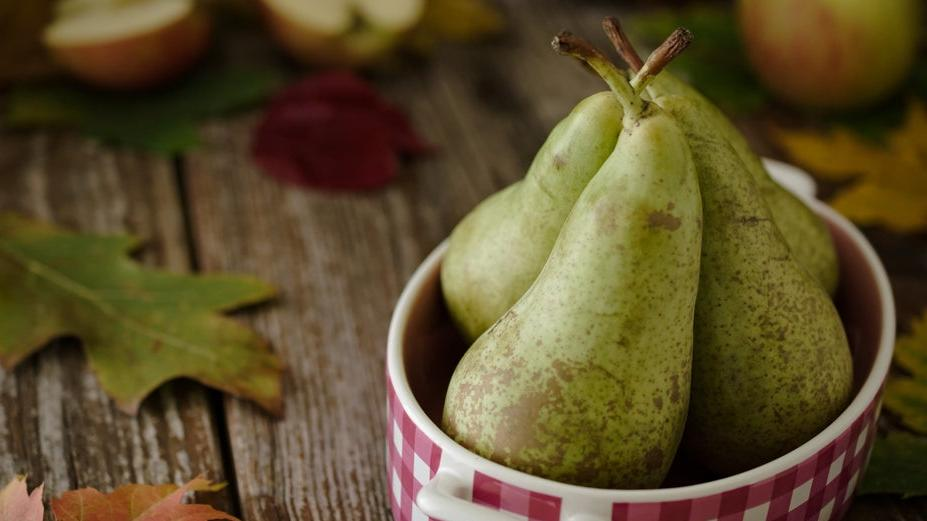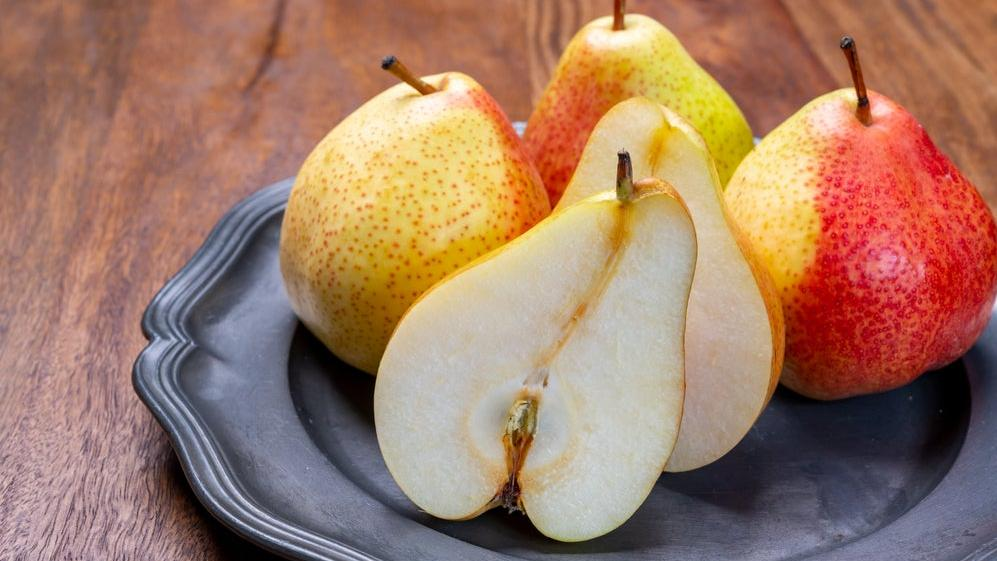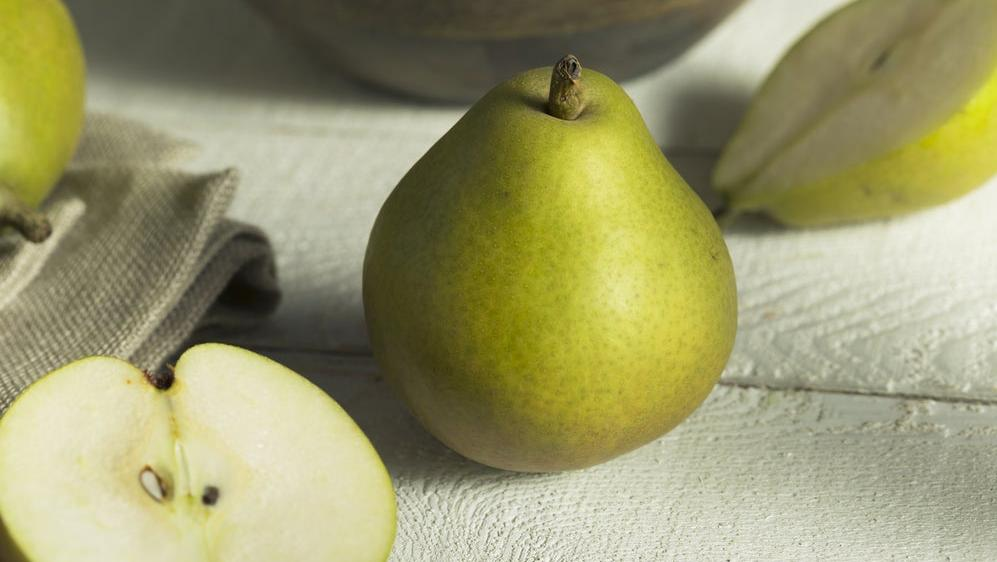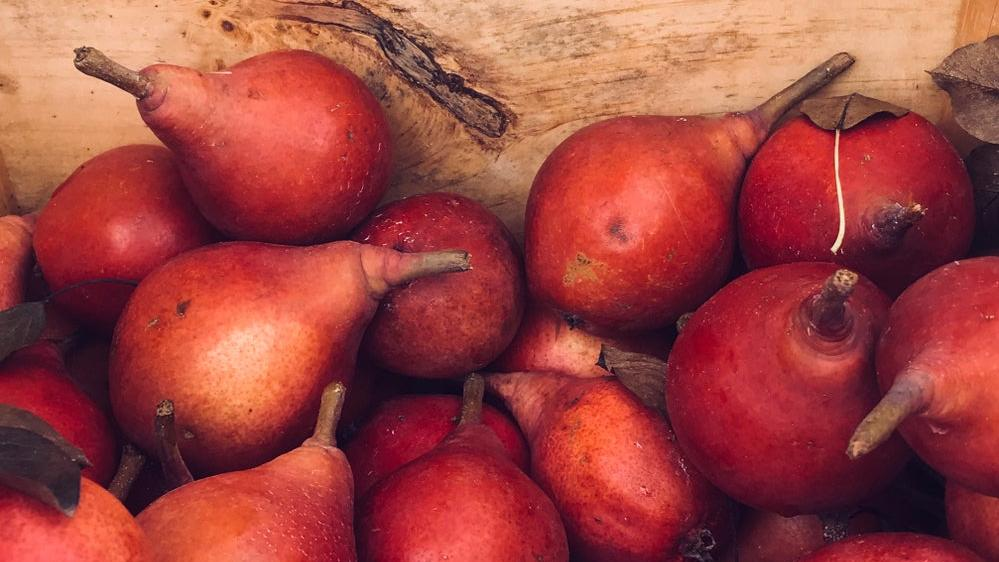9 Popular Pear Varieties And When To Use Them
Can you name any pears beyond Anjou, Bosc, and Bartlett?
When I was a kid, my family showed love and prosperity by gifting each other boxes of Harry & David pears. This tradition of showering each other with pears dates back as far as Homer (not Simpson—the one from The Odyssey), who said pears are the ultimate gift of the gods. Assigned to Hera/Juno, the Greek/Roman goddess of marriage and mom-bods, these juicy-bottomed treats are affiliated with fruitfulness and a bounty as boundless as the sea. In China, they're a symbol of immortality due to the long lives of the trees. In the United States, there are ten common varieties you're bound to find most often in grocery stores, each with their own unique attributes. Here's a quick rundown of each—how many have you tried?
Anjou pears
Simultaneously firm and juicy, Anjou is one of the most popular types of pears. They're named for a region in France (sometimes the pears are called D'Anjou), where they might have come from roughly 200 years ago. They're very pretty, too, in a classical way, because of their red and/or green coloring. Anjous are versatile in that you can eat them raw, skin and all, or use them in cooking with equally successful results. The green ones are the most commonly found pear in the summer, while many other types are considered more fall fruits. Try using them in this Brown Sugar Clafoutis recipe.
Asian pears
Pears have been cultivated for 7,000 years. Starting with one Chinese diplomat's obsession, they eventually proliferated around Europe before migrating to the Eastern United States and eventually westward. So, if you think about it, all pears are Asian pears in a way. However, when we say "Asian pear," we mean the round, light brown ones (shaped much more like an apple) that have a crunchy flesh and a mild, nutty flavor. These are often used in salads.
Bartlett pears
Named for our greatest fictional U.S. president (not really), the Bartlett pear is the quintessential pear due to its shape, called "pyriform." Big, green, and juicy for the five minutes during which they're perfectly ripe, these are the pears that define pear-flavored candy, body types of the '90s, and children's drawings of pears. They're easier to grow than "fancier" varieties and are fairly hearty, making them a good grocery-store staple and America's favorite pear. They can also come in red and yellow and are the "canning pear" due to their sturdiness. Try making a Poached Pear Seafoam Salad.
Bosc pears
Bosc pears have a potato-like skin and a potato-like texture. People like them, apparently, but they can be too mealy when eaten raw. Because of their crisp sturdiness, they are good baking pears. That's not a knock against them—after all, potatoes are delicious, but you wouldn't just bite into a raw potato, would you? Would you? No, you'd probably roast it first. Treat these pears like a potato and you're golden (unlike these ugly pears).
Comice pears
The famous Harry and David Royal Riviera Pears are a Southern Oregon version of the French varietal, Comice. I've never been to France, but I have been to the Harry and David flagship store in Medford, which is obviously just like the South of France. (This joke works best if you've been to Medford, which you haven't, so don't worry about it.) There is something special about these one-pounders, which are soft and supremely sweet at peak ripeness. They're not often at grocery stores because these elites are too delicate to be handled by the masses. You definitely want to eat this one raw as a snack, to experience the full flavor and texture by itself, or paired with a bit of cheese.
Concorde pears
These longer, thinner green pears look like stretched-out Bartletts. Concorde pears are easier to deal with, though, because they don't taste like raw potato when you bite into an underripe one. In fact, they have a vaguely vanilla flavor, making these a good addition to savory dishes that include cheese or pork, although if you catch one at perfect ripeness, they are also tasty when eaten raw. They're a good choice for poaching because their thicker skins make them able to take heat.
Forelle pears
Forelle is the German word for trout, but a Forelle pear is a pear named after a trout because the Germans who named it thought it looked like a trout. Fair enough. Appropriately, they work well in seafood recipes like fish tacos and crab. These are little guys with freckled skin, although the botanical name for these freckles is lenticels, and I do not care for that term one bit. The small size of the Forelle makes it a good snack, if, say, a whole pound of Comice doesn't suit you as a side dish.
Seckel pears
Like America itself, Seckel pears were born in Philadelphia in the late 1700s. These bitty babies will fit in the palm of your hand and are good raw, making them a good snacking pear. They can be canned whole, and gifting a jar of "baby pears" isn't as creepy as it sounds since it tastes delicious.
Starkrimson pears
Starkrimson pears are crimson. That's how you can remember which pears these are. This variety began by happenstance as a spontaneous mutation of another pear, but it became its own thing because of its attractive look and light floral qualities. These are like the mood rings of the pear world, as (unlike most varieties) their skin changes color to tell you when they're ready for you to ingest, going from "deep crimson" to "bright crimson" at peak ripeness. You know the difference between those shades perfectly, don't you?
